
Introduction:
To promote inter-disciplinary interactions, discussions, and critiques about the role of Southeast Asian and South Asian visual art in Asian Studies, the Association for Asian Studies is pleased to hold a virtual film festival and two AAS Digital Dialogues, with the support of the Asian Cultural Council (ACC).
The AAS-ACC South and Southeast Asian Virtual Film Festival, “Re-envisioning Asia: Contestations and Struggles in the Visual Arts” (September 20 – October 3, 2021), features the work of a selection of Southeast Asian and South Asian films, documentaries, and visual arts from Bangladesh, Brunei, Cambodia, India, Kashmir, Myanmar, Pakistan,and Sri Lanka. These contributions will give us a unique insight into the role of filmmaking in documenting the arsenal of resistance in the face of daily violence in places like Cambodia, Kashmir, or Myanmar.
The artists will join two AAS Digital Dialogues (September 24 and September 30) to discuss raising awareness on key social and political issues, engage with one another’s work, and reflect on their personal creative journeys. Our conversations will bring female film directors, activists, and actresses, whose works deconstruct stereotypes in their own countries so as to raise important issues of gender, sexuality, equality, and censorship in Bangladesh, Brunei, and India. These conversations will also shed light on the divide between traditionalism and secular modernity, the dramatic impact of COVID-19 on precarious lives, and the transhistorical perspective offered by the Asian diaspora from countries like Pakistan and Sri Lanka.
Thank you to everyone who attended the AAS South and Southeast Asian Virtual Film Festival, “Re-envisioning Asia: Contestations and Struggles in the Visual Arts.” Online access to the film festival has now ended.
Free and open to the public thanks to generous support from the Asian Cultural Council
List of Films and Participants:

FILM OVERVIEW & DESCRIPTION:
Under Construction (2015) 86 minutes, directed by Rubaiyat Hossain
Bengali with English Subtitles
Description
In the constantly changing city of Dhaka, Roya, an actress in her mid thirties, has to face her first challenge. It has been years since she started playing the same part repeatedly, working for a stage director who now thinks she’s getting too old. She enters a deep introspection about her life, her art, her own desires, and her place in a patriarchal society. Under Construction provides the portrait of a woman, whose life is still under construction.
What was the source of inspiration for the film?
When I wanted to make a film about contemporary Dhaka, I felt having Tagore’s play in the backdrop would be very apt. Red Oleanders was Tagore’s last play published in 1926. It was published at a time when the whole world was celebrating industrialization, but Tagore launched a critic on industrialization and capitalism in this play. I was also talking about ready-made garment industry in Bangladesh where workers work day and night for European and American corporation. These workers never meet the actual boss they work for, so the boss/ king is hidden behind the net just like in the play. These workers also die in building collapse, fire accidents where their lives just become numbers. I also wanted to challenge Tagore’s iconification of ‘Nandini’ through actual women characters who are individuals in their own right.
In which social or political context was this created?
The journey of the middle class women in Bangladesh is an ambitious one. The middle class women today, on the surface seem to be liberated and empowered, however, they always face a glass ceiling and a mode of silent domination from family to adhere to the traditional role of domesticity and motherhood. I wanted to take a close look at a woman’s life where she was not ready to put her marriage and motherhood first, a woman who wanted to put her passion for art first. This woman is called selfish. This woman is stifled and we don’t know if she will be able to hold on to her art and her work, but she is struggling. This is a woman that is me, that is my friend and women all around me. I wanted to portray this experience in film. Also I wanted to talk about how women in different social class and age group may have different notions of empowerment and freedom. In Under Construction the middle class theater actor Roya’s journey and working class factory worker Moyna’s journey are quite different. I wanted to juxtapose these two women to bring out the complexities of women’s experiences that can’t be homogenized.
What were the main challenges encountered?
It is challenging given there are very few female directors in Bangladesh. There are only 12 women in the history of Bangladesh who made films and most of them were actors turned into directors who made one film and then disappeared. In the beginning when I started directing in Bangladesh I had to face a lot of doubts as directing is considered a man job. It was hard to get the confidence of my actors and my crew. However, as I kept working things have become a bit easier. Especially with Under Construction being released in Bangladesh earlier this year I have been appreciated by the audience and also the film community. I am a member of the Bangladesh directors guild at Bangladesh film development corporation, which gives me access to subsidized equipments, shooting floors, food during the shoot. I get a lot of positive feedback from women which is inspiring. For example Bangladesh Mahila Parishad, the oldest women’s rights organization in Bangladesh presented me with a special honor for Under Construction, which is something I treasure very much. I feel through making films I have been able to empower myself. Filmmaking has made me strong and in some sense it had made me transgress the gender barrier.
Featured Speaker

Rubaiyat Hossain
Director of Under Construction (2016)
Rubaiyat Hossain is one of Bangladesh’s handful of female filmmakers, known for her critically acclaimed debut feature film Meherjaan (2011) which faced political and cultural wrath in Bangladesh for its antiwar narrative, and its critic of masculine nationalism from a feminine point of view. Her second feature film Under Construction (2015) premiered at New Directors Showcase at Seattle International Film festival and was theatrically released and well received in Bangladesh. Her third feature film Made in Bangladesh (2019), based on real events portrays the life of a textile union president. Rubaiyat used ethnographic research in making the film. Made in Bangladesh premiered at Toronto International Film Festival and distributed by Pyramide Films. Rubaiyat uses a feminist lens in her cinema. She studied women’s studies at Smith College and Cinema Studies at Tisch School of the Arts, New York University. Rubaiyat has worked with women’s rights organizations in Bangladesh and taught gender studies at BRAC University.

FILM OVERVIEW & DESCRIPTION:
Gagak dan Merak (2019) 12 minutes, written and directed by Abdul Zainidi
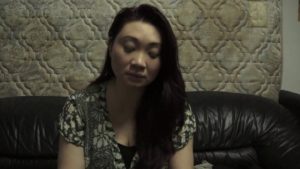
Description
Gagak dan Merak is a coming of age story. A young man who was out last night still wearing his drag outfit is caught by his distraught conservative mother, a showdown ensues.
What was the source of inspiration for the film?
Gagak dan Merak is sort of based on this animal story about two birds the peacock and the crow. The peacock being more pretty and attractive showed off as it is in its nature to do so. The crow a bit envious tricked the peacock into believing they were friends found black paint and poured it all over the peacock. The peacock lost its beauty and ended up joining the crows who rejected the peacock too. Eventually the peacock went mad and died alone.
In which social or political context was this created?
Back then it was taboo to even address such topics as sexuality, dressing up in women’s attire as Brunei is still heavily influenced by the doctrine of melayu, islam, and beraja. However times have changed since 2012 and ‘lgbt culture’ is somewhat tolerated. I wanted to broaden my horizons and make something not surreal (bread dream, teluki) or horror themed (vanishing children).
What were the main challenges encountered?
While filming something like this subject proved challenging when I shot haram queen there was a lot of backlash from the trailer. And doing a similar film like this required discretion and dedicated actors! I was fortunate Liz Sim accepted and dedicated herself to the project. I was also blessed to have a talented make up artist to do the drag makeup Emirul Hamdi. It was tricky it was not the kind of film you want to release in Brunei and was selected overseas in indie film festivals and even queer film festivals QAFF (Queer Asia Film Festival London 2017)
What should the audience know about this film?
I wanted to experiment and back in those days I was armed with a camera and ideas. Nothing much has changed now but I have made more rich and bigger stories such as ‘worm and the widow’ winner of film excellence at the Mongtomery international film festival and a nominee for ‘projekcemerlang’ at the annugerah belia 2021 under the Brunei ministry of culture youth and sports. I still hold a special place in my heart for Gagak and Merak as it shows that even with low budget filmmaking a powerful story can be told.
Cov-eid Raya (2020) 12 minutes, written and directed by Azeez Danial
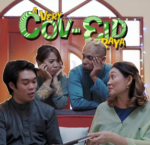
Description
A nosy mother can’t help but ruin her Neighbour’s Raya spirit until she finds out about his past.
What was the source of inspiration for the film?
I grew up watching a lot of Christmas films but the main inspiration was from the character the grinch from “How the Grinch stole Christmas”. – Azeez Danial (Writer/ Director)
In which social or political context was this created?
Due to the pandemic happening before hari raya , I was interested on how the locals handle it, in my head I feel like people who were so focused on their selfish perspective needed to see what they always have which is family and some might not even have that luxury. – Azeez Danial (Writer/ Director)
What were the main challenges encountered?
The pre-production(planning) phase was during Ramadan and we didn’t have time to film the short film and by then Raya has already started, lucky the team felt like the concept is still strong and COVID-19 will be something people remember – so I am glad we did decide to film it in the end. – Azeez Danial (Writer/ Director)
What should the audience know about this film?
I had two other directors with me that’s Aaqiil Ahmad and Halim Ashari, they and the crew always give 100% in the work every project, I think its important to also highlight the team otherwise this couldn’t happen without them. I am grateful to work with fun and talented cast who were supportive throughout the journey. – Azeez Danial (Writer/ Director)
Connect (2020) 9 minutes, a short film by Karen Lee
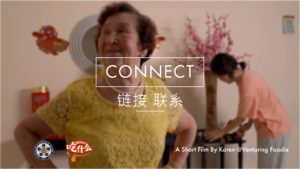
Description
The short film is about a family having their Chinese New Year Reunion dinners over two years. The film centers around the main protagonist- the grandma. In 2020, pre-covid times, everyone is physically together but emotionally disconnected as they are distracted by their devices. As the year progresses, the family members who live in different countries struggle to return to Brunei amidst the Chinese festivities, making woeful promises to come back for CNY Reunion Dinner 2021. In the end, they find themselves celebrating the Lunar New Year by connecting through a group call. This time, although they are physically disconnected, they are emotionally connected and perhaps even closer than before.
What was the source of inspiration for the film?
I had just completed writing and directing my first short film back in December. My friends and I were still running on the high of having completed a film and we wanted to make one for the upcoming Chinese New Year. A friend in particular wanted to highlight the Covid situation that separates families from each other. Being half Malaysian myself, I have half my family in Brunei and the other half in Malaysia and Singapore. Most of this film is based off what would be my family’s experience of Chinese New Year in 2021. It’s a story very closed to my heart and it’s the epitome of art imitating life. My very own grandmother (the protagonist in the short film), whose children (my uncle and aunties) and grandchildren (my cousins and I) served as blueprints for the characters in the film. I think what the pandemic has taught us is to not take things for granted especially time spent with your loved ones which is what I wanted to show with the film. At the same time, I wanted to convey that although distance may cause families to be apart but family bonds will always be there. Distance does not matter when the heart wants to connect. I am also a fan of works by Malaysian director Yasmin Ahmad and Singaporean director Jack Neo. Both their works are known to be heartwarming and family-oriented, tugging at the heartstrings of audiences with familiar topics. I wanted this short film to carry a similar warmth and sincerity as their works so I was very much inspired by them.
In which social or political context was this created?
This film was conceptualized and shot during a time when Covid 19 was ravaging various parts of the world. Despite the controlled situation in Brunei, it was heartbreaking to hear our loved ones in other countries, still struggling with the pandemic as their main sources of livelihood were put to a halt.
What were the main challenges encountered?
- No equipment + crew:
As with many productions, there were difficulties that we faced in making this film. Being an amateur film-maker, I had no team or equipment to actually make the script come to life. I was very lucky to have collaborated with the local film school- Mahakarya Institute of the Arts whose students formed half the crew. The other half of the crew were some of the cast doubling up on production roles and friends. Equipment was lent to us by the co-founder of the institute, Siti Kamaluddin.
- No Budget:
Seeing as this production was also a passion project, we had a $0 budget so all the set design and props in the film were borrowed from friends and family. In fact, the house used belonged to my aunt. However, food for the cast and crew as well as the lavish Chinese New Year dinner scene remained a problem but we were sponsored by a local restaurant courtesy of Munji Athirah.
- Lack of experience:
Being an amateur director (with only one other short film under my belt), I found it a challenge to shoot with such a big cast and crew especially since most of the cast were first-time film actors. Filming with an elderly, I also had to be wary of not tiring her out. The filming for this short film took 2 days and we could only film from mid afternoon to late night. I along with some of the cast and crew had day jobs so it was a very tiring two days.
- Short production timeline:
The shooting for this took place this in early February as that was when the students were free to focus on this project. The film had to be out by the second mid-week of February to coincide with the 30th Night of CNY 2021, so post production was very rushed, definitely a very stressful couple of days.
- Lack of Actors
Casting was another issue that we had. As the script calls for a Chinese family, it was very hard to find middle aged Chinese to act as mothers and fathers for the film. We didn’t have time to do a casting call and the pool of Chinese actors in Brunei was very, very scarce. My family really helped me in trying to find people who would be willing to act in the film as well as acted in the film.
What should the audience know about this film?
This short film is not just a passion project but also a product of love, care and sincerity. The soundtrack of the film was sung by a local singer who also happens to be a very dear friend of mine, Ruby Chong. The cast of the film was made up of 80% new actors and were all my family and friends. All of whom agreed to do it voluntarily. I was also very blessed to find financial sponsors for the film the night before the short film was due to be released. I decided to find sponsors because I felt that it was only fair that the cast and crew were paid even though most have agreed to do it voluntarily initially. As an amateur film maker, I was also very lucky to have advice from various people within the film industry such as Dr Alex Fisher and Chan Man Ching. This short film is also the first Hokkien speaking film to be released in Brunei. Chinese people make up only 10% of the population in Brunei. I wanted this film to be a representation for the local Chinese community within the Bruneian creative industry and hopefully encourages other Bruneian Chinese to pursue more creative endeavors. Aside from that, the incorporation of the various Chinese festivals in the film is hope to shed a light on Chinese culture to our fellow Bruneians. All in all, please enjoy the film and I hope it resonates with you.
Featured Speaker

Elizabeth Sim
Bruneian based performing artist
Elizabeth Sim aka Liz is a Bruneian based performing artist who received her formal education from Brunei, Canada and recently the New York Film Academy in NYC. Her diverse talent as an actress ranges from stage to film performances whose recent work includes a theatrical production of “Eight Women” (2020) inspired by Robert Thomas’s 1958 play and an original devise piece titled “Reunion” (2021) at Brunei’s first National Theatre Festival, written and performed by her and her Drama Troupe – The Brunei Amateur Dramatic Society. Her latest films include “Akademi”(2020) an action/comedy feature film. Liz also conducts acting and improv workshops to aspiring actors and collaborates with other artists to cleverly craft original works discussing issues that are considered taboo in Brunei.

FILM OVERVIEW & DESCRIPTION:
No Choice (2020) 11 minutes, Directed by Din Roda
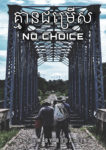
Khmer with English Subtitles
Description
J Roum and her family were working in Thailand, but the onset of the COVID-19 pandemic required them to return to Cambodia. Now, she and her husband work on a construction site at the Teuk Thla Bridge in Serey Sophoan in Banteay Meanchey province. However, J Roum and her husband are forced to bring their three children — ages 4, 12 and 14 — with them to work every day because they cannot afford to send them to school.
Struggle (2020) 7 minutes, Directed by Vunneng Leng

Tumpuan with English Subtitles
Description
In rural Ratanakiri province, Net Kreak lost his leg after being bitten by a poisonous snake. Following the accident, Net Kreak’s wife left with his children. Now, Net Kreak lives alone with his mother and works a variety of jobs to support them both. Remaining optimistic, he hopes to one day have enough money to buy a customized prosthesis and reunite with his children.
Don’t Give Up (2019) 11 minutes, Phok Rany
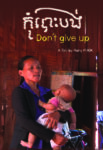
Kreung with English Subtitles
Description
This film is about Ravi Chor Vy, an ambitious Kreung ethnic teacher in Krala Village, Ratanakiri, who fights to preserve the Kreung culture for the improvement of the community. Trying to pass on the Kreung language to the next generation, she does not stop teaching at school even during pregnancy and afterwards carrying her baby in arm. But as children do not understand the value of education, they resist learning and even after going school for years cannot read nor write properly. However, Chor Vy has not given up her teaching efforts and was therefore promoted by the Ministry of Education, Youth and Sport.
My Home (2020) 28 minutes, Sopheana Choun, Choulay Mech, Sopheak Yam, Sochetra Mean, and Pisen Chhean
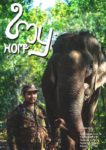
Bunong and Khmer with English Subtitles
Description
Chheol Thouk never wanted to be anything else but a mahout and he roams the forest tending to his elephants. But the natural habitat in Mondulkiri province shrinking due to deforestation threatening the elephants, their ecosystem and Chheol’s way of life.
Cast
Chheol Thouk, Tan Som, Nowl Gee (elephant), Easy Rider (elephant)
Elephant conservation and indigenous experiences in Cambodia: Shaping environmental awareness through participatory filmmaking with young people
This project uses participatory filmmaking to engage young people in the legacies of conflict, post-conflict development challenges and the harms inflicted on the environment. In particular, it focuses on elephant conservation and challenges facing indigenous communities in the Mondolkiri province of Cambodia. It encourages young people to become agents and beneficiaries of change and supports them in the creation of films which explore and can amplify awareness of conservation and indigenous issues across communities.
Cambodia’s forty years of conflict have left a legacy of environmental harms, including wildlife reduction, deforestation and the loss of cultural heritage informing locally grounded approaches to forest management. Cambodia’s transition to peace and subsequent development has witnessed further environmental harms. Wild elephant numbers, in particular, have sharply declined as a consequence of the loss of their natural habitats. Indigenous communities, who have close cultural and spiritual relationships to elephants, suffer particularly as a marginalised group within wider Cambodian society and as a result of development pressures affecting the forests that they reside in. Conservation practice around elephant habitats, and issues facing indigenous communities who live alongside elephants, therefore offers a key site through which to encourage active and empathetic engagement with conservation issues in Cambodia.
The project involves a collaboration between the University of Bath, Queen’s University Belfast, The University of Leeds, Bophana Audio Visual Centre, and Elephant Livelihood Initiative (ELIE). Through the recruitment of 12 young people, who will be trained in co-productive and participatory filmmaking methods, the project will deliver 3 films that can be used as advocacy tools, highlighting exemplary conservation practice, environmental challenges, and issues facing marginalised indigenous communities through field visits to ELIE sites. Screenings will be held in indigenous communities, for conservation practitioners, at international film festivals, and through social media. In addition to encouraging engagement with conservation issues, it will thereby build a new generation of filmmakers in Cambodia, delivering transferable skills and supporting their longer-term employability.
Featured Speakers

Sopheap Chea
Executive Director of The Bophana Audio-Visual Center
Born in 1984 in Cambodia, Sopheap grew up with a family who experienced and went through the infamous Khmer Rouge regime in Cambodia between 1975 and 1979. He earned his Master of Arts in History at Khemarak University in 2012. Chea is a historian, who from a young age was curious about stories of life in Cambodia before he was born. That curiosity is what led him to Bophana Audiovisual Resource Centre, initially as an Archivist and today as Executive Director.
The Bophana Audio-Visual Center was founded by visionary film director and Academy Award nominee Rithy Panh along with Ieu Pannakar, former Senator and Minister of the Royal Palace, with a view to preserving the visual memory of Cambodia’s past. Through thousands of films, documentaries, TV coverages, and photographic archives, the mission of the Bophana Audio-Visual Center is to provide young Cambodians (from Khmer and ethnic minorities) with an appreciation for cultural preservation and vocational training to develop their knowledge and cinematographic skills. The Center has successfully launched a series of documentary projects ranging from the ‘One-dollar’ project, which records the lives of the Cambodian poor, to amplifying the voices of indigenous women and other maltreated groups, through sharing the personal stories of Khmer Rouge survivors.
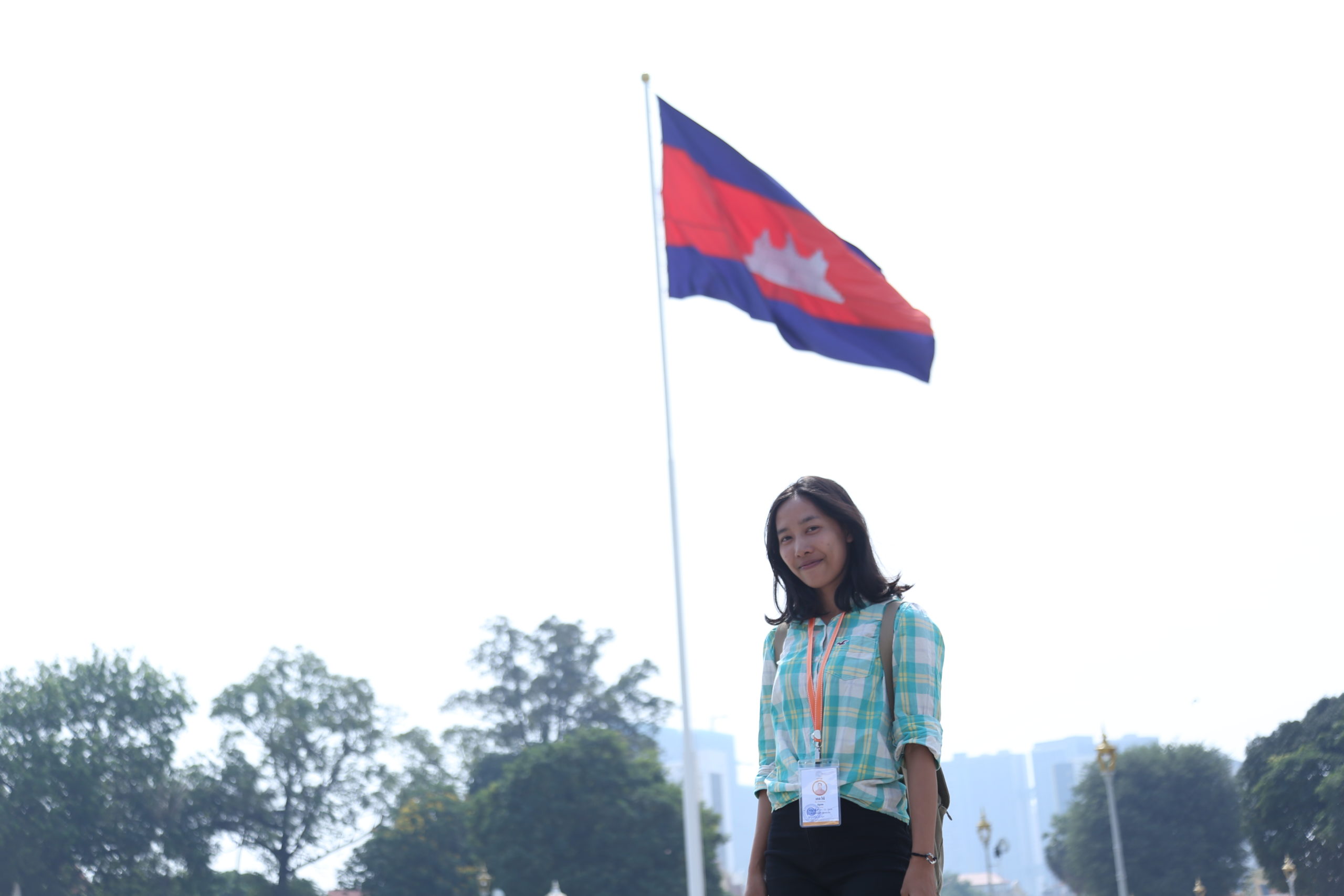
Rany Phok
Director of Don’t Give Up
In 2015 Rany graduated in Economics at Royal University of Law and Economics in Phnom Penh.
“Women are as capable as men” is the statement that inspired Rany to leave her hometown and to study in Phnom Penh in 2010. In her community, there are two major issues affecting women and indigenous children: health and education. She aims to inform women in her community about the importance of education and to encourage them to pursue their dreams.

FILM OVERVIEW & DESCRIPTION:
Against the Tide (2021) Sarvnik Kaur
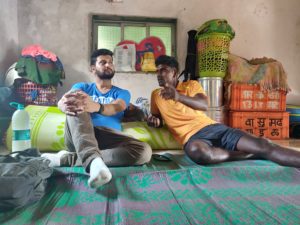
Description
The film is a tale of brotherhood and resentment against the backdrop of mother sea, which is now menacing because of climate change. Rakesh and Ganesh have sea in their veins. The sea is their mother, their lineage. She gave them identity, offered them food and on her lap, their brotherhood has grown. They are Kolis, the indigenous fisherfolk of Bombay. But the loving tolerant mother they always knew is changing in front of their eyes, she is becoming warmer and turning lifeless. Rakesh and Ganesh’s livelihood and even their relationship is now at stake. Worsening climate is leading to conflict between the brothers. It’s distancing one brother from the other, pushing them apart in two directions, different paths of life.
What was the source of inspiration for the film?
My grandparents were born in Pakistan when the country was part of British India. In 1947, India and Pakistan were divided and the two countries have entered into a mortal conflict, which continues today. My grandfather’s family, Sikhs, fled Pakistan to a refugee camp in New Delhi where my father was born. In 1984, whereas my grandparents had managed to leave the camp and build a modest house, it was completely destroyed during an anti-Sikh riot. I was one year old. My family had to move again. I grew up with the trauma of these successive uprootings and a constant fear. This personal story brings me back to the Koli community, whose territory and tradition are also threatened. Bombay is a suffocated city where space is scarce and expensive. The Kolis’ lands are now the last available ones in the city center and their owners, whose income depends on increasingly meager fisheries, are often forced to sell them to rich entrepreneurs or politicians who will build luxury residences with a view.
The Kolis who still live there will be driven out in ten years by land pressure and rising waters. Even the most resistant, like Rakesh, will inexorably abandon their house and, with it, their way of life, a part of their history and their traditions. Like my father and his family, they will one day be displaced, refugees. The Koli community of Bombay will be sacrificed for lucrative real estate deals and generalized inaction regarding the climate change. It will soon disappear, and I am filming its last stirrings.
My first film Soz: A Ballad of Maladies was an exploration of Kashmir’s disenfranchised youth who struggle to express themselves amid state excess, surrounded by conflict that’s been ongoing for several decades. The story of Kolis resonated with me because it is a world that is being ruptured by forces that are too large to navigate through. I started to recognize the telltale signs of stress and anxiety in the community – that fear of uncertainty felt familiar. With my family it was in the name of religion, with Kashmiris – it’s Nationalism and now with the Kolis – it’s Development.
In which social or political context was this created?
On April 20, 2020 – barely a few months into the global Covid 19 pandemic – CNN carried a story Coronavirus pandemic will cause global famines of ‘biblical proportions,’ UN warns. The Atlantic Council of US in their Global Risks 2035 Update have predicted that major cities of the world including Bombay will be submerged by 2035 (15 years sooner than the last prediction) because of increasing sea levels caused by climate change.
As we stare at this world of uncertainty – by 2035, the point of no return could be crossed. It will then be extremely unlikely that the international community can stop the Earth’s temperature from rising by 2 degrees Celsius (3.6 degrees Fahrenheit) every year. This increase will kick off a dangerous medley of global climate disasters. The poor are most vulnerable to worsening climate conditions and will be caught in an endless cycle of poverty, hunger and starvation unless we act now.
I first started engaging with ‘Koli Fish Seller Women’s Collective’ in 2017 when they were in an ongoing struggle against Municipality authorities’ attempts to turn their 200 year old fish market into a commercial complex. I made short videos to help the women create a digital campaign to gain support from Bombay civil society. It is during the groundwork for this campaign that I first met Ganesh who opened up another perspective. This good-looking educated young man was a torchbearer of modernity with a definite vision for Koli future. His brother Rakesh who I’d already met through his mother (she was part of the women fishermen collective) seemed very grounded in tradition. Over the years, the brothers became my guides, my champions and this close association with them made me realize that Indigenous communities like the Kolis who are already on the brink of extinction can play a crucial role in staving off the impending food crisis.
The need of the hour is to protect and learn from these communities that have lived alongside and harvested nature through their sustainable methods that make a part of their ancient knowledge system.The difference in Ganesh & Rakesh’s outlook on survival reflect the differences in their fishing techniques – the resultant havoc that it is causing in the microcosm of this ‘family’ is merely a reflection of the bigger crisis that we are facing today. “Kolis were always self sustained,” Ganesh often says to me. “We were forced to adapt, to transition to modernity. As the world around us became crueler and survival more challenging, we too had to readjust our perspective on the sea from being a mother to a resource meant for exploitation.”
What were the main challenges encountered?
The challenges are ongoing and better discussed than written about.
What should the audience know about this film?
Against the Tide builds on the same theme as Soz – ‘fraying of social fabric in communities under sustained conflict’ however it’s a departure from my first film in structure and form. Unlike Soz, Against the Tide is intended to be a narrative driven creative documentary. I’ve spent years nurturing the narrative so I can tell a truly intimate human story of climate conflict as lived by this family. With this film I want to further my craft as a non-fiction story teller.
Featured Speaker
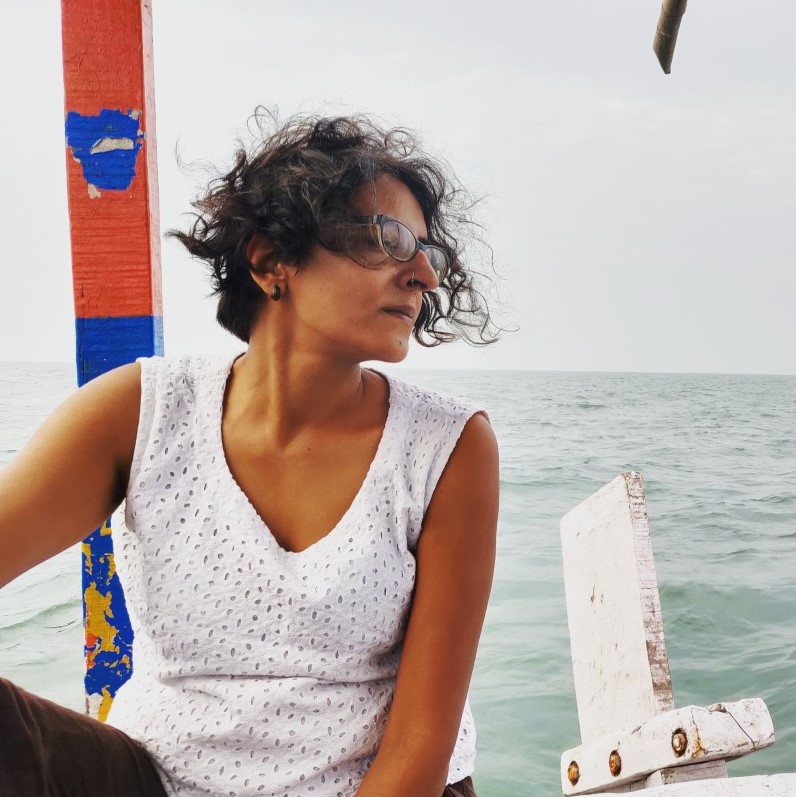
Sarvnik Kaur
Director, Soz – A Ballad of Maladies and Against the Tide C&E Sheffield 2021
Sarvnik Kaur is a documentary filmmaker who strives to tell stories that hide anxiety and conflict just beneath the surface of the ‘normal’ and the ‘mundane’. Her first feature documentary film Soz – A Ballad of Maladies explores the tradition of political resistance through music and poetry in Kashmir through the work of those poets, hip hoppers, musicians and artists who have turned their art into weapons of resistance during periods of heightened state repression and violence in the region. Despite being banned by Doordarshan (the National Broadcast Network), the film won President of India’s 64th National Film Award for Best Debut Film in 2017. Soz also won Best Film at ’11th Film Southasia Kathmandu’ and Best Documentary at 10th IDSFFKerala.She has spent the past four years immersing herself in the Koli fishing community of Mumbai. She has made efforts to approach their lives and conflicts not just as a filmmaker, but as an ethnographer and a friend.
Sarvnik is currently working on a new film Against the Tide C&E Sheffield 2021, which tells the story of two fishermen, whose fraternal bond is threatened by the tides of COVID-19.

FILM OVERVIEW & DESCRIPTION:
Blood Leaves its Trail (Khoon Diy Baarav ) (2015), 90 minutes, Iffat Fatima
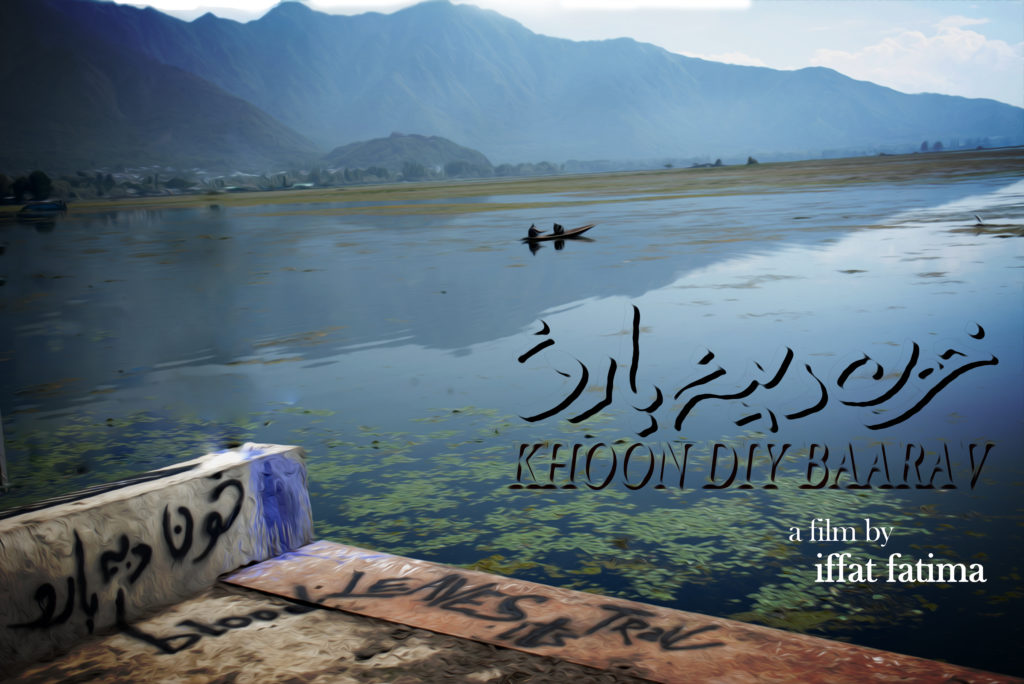
Khoon Diy Baarav is a non-sequential account of personal narratives and reminiscences ruptured by violence, undermined by erasure and over-ridden by official documents that challenge truth. It explores memory as a mode of resistance, constantly confronting reality and morphing from the personal to the political, the individual to the collective. Struggling to find new ways of expression – storytelling, art, symbol and ritual – sometimes spilling out on to the streets, it looks at the ways in which those affected by violence have no choice but to remember.
I completed Khoon Diy Baarav (Blood Leaves its Trail) in June 2015, after working on it for about 9 years. During these years, travelling across the Indian-controlled Kashmir, I became a witness to the inevitable consequences of large scale militarization- torture, rape, extra judicial killings, exhumations, arbitrary detention, and enforced disappearances. The film is a consequence of my bearing witness.
I got introduced to the issue of Enforced Involuntary Disappearances (EID) and its devastating impact on the affected families in Sri Lanka where I lived and worked between the years 2000 and 2005. EID is a heinous crime under which persons are arrested, detained or abducted by state forces or their agents, who deny that they are being incarcerated or conceal their whereabouts, placing them outside the protection of law. The discovery of thousands of mass graves is a grim reminder of the reality of EID in Kashmir (SHRC, 2011). It is difficult to compute exact figures, human rights groups estimate that about 8,000 to 10, 000 persons have been subjected to EID since 1989.
After my return from Sri Lanka in 2006 I started working with the families of the victims of EID in Kashmir come together under the banner of The Association of Parents of Disappeared Persons (APDP). As I started interacting with the affected people I got drawn into their struggle- it became less about the film and more about their struggle which was unfolding before me on a day to day basis. I didn’t have any particular concept or plan, but I was documenting the struggle. That engagement, documentation of the living struggle, that was critical. The camera became an agent for the families. They had a clear understanding that it is a powerful tool for taking their issues forward. When they would speak to the camera, it was as though a validation of their struggle. Kashmir is one of the most militarized zones in the world. It has the highest number of military forces, not just on the borders but in towns and cities where people are living. So when the military is so omnipresent, things are bound to happen… Both the camera and the film subjects are constantly confronting and overcoming obstacles- checkpoints, armed personnel stopping the camera and the subjects- snd I was recording that. The camera experienced and became a participant in the film subjects experience thus becoming a direct witness to what is being recounted and remembered.
In 2010, there was a paradigm shift in the movement for self- determination in Kashmir wherein people reclaimed their lons struggle which was consumed by the gun. People were regularly coming out into the streets in thousands, and were being brutally crushed. As I saw young people being killed I felt that it was time to put it all together. I had hundreds of hours of material by then.
How to frame the material and put it together was quite a demanding process; I wanted to open out the experience of everyday life in a place which is highly militarized and controlled and evoke the imagination of the viewers to the travails of that life. I think an experiential engagement with the viewers is necessary if you as a filmmaker seek your viewers to challenge their own deeply held opinions or understanding through compassion and empathy. I made several cuts. Digital technology is fluid and enabled me to constantly refine the film through re-editing in response to multiple test screenings during the 9-year long production that finally resulted in Khoon Diy Baarav.
Khoon Diy Baarav is a term often, very often used by the affected people to express resistance as well as their demand for justice. It’s a complex saying; translating it effectively is almost impossible, broadly it implies that blood that is spilled will not go waste, it will extract justice. In other words blood that is shed through oppression and violence sediments in memory and will re-emerge in the form of resistance. From memory comes an empowered form of resistance. Resistance is the key word in Kashmir where people are grappling with the impossibility of justice from the Indian state which hasn’t been coming for the last sixty years, and there is little expectation of it in the near future. “The state makes our truth into lies and their own lies into truth”, says Parveena Ahangar who has been leading the battle against enforced disappearances in Kashmir. The film amplifies the voices of women by highlighting the forms of resistance that are less visible. The women in the film whose husbands have been disappeared or killed; they’re single women bringing up their children and at the same time making sure that their disappeared husband remains alive in a certain way in the public sphere. For decades every month they assemble in a public park to demand justice and information about the whereabouts of their loved ones. It’s painful to do that, you’d rather forget and move on in your life. To be able to resist those pressures needs tremendous resilience. As they come out into the public space demanding justice and accountability, these women challenge mainstream perspectives, particularly on gender roles in Muslim societies. They have mobilized an entire community – artists, writers, poets, musicians, students, activists, filmmakers join them in their protest and remembering. It is these women and their sustained courage and struggle that inspires and informs much of my activism, intellectual inquiry and filmmaking.
Soz: A Ballad of Maladies (2016) 85 minutes, Sarvnik Kaur and Tushar Madhav
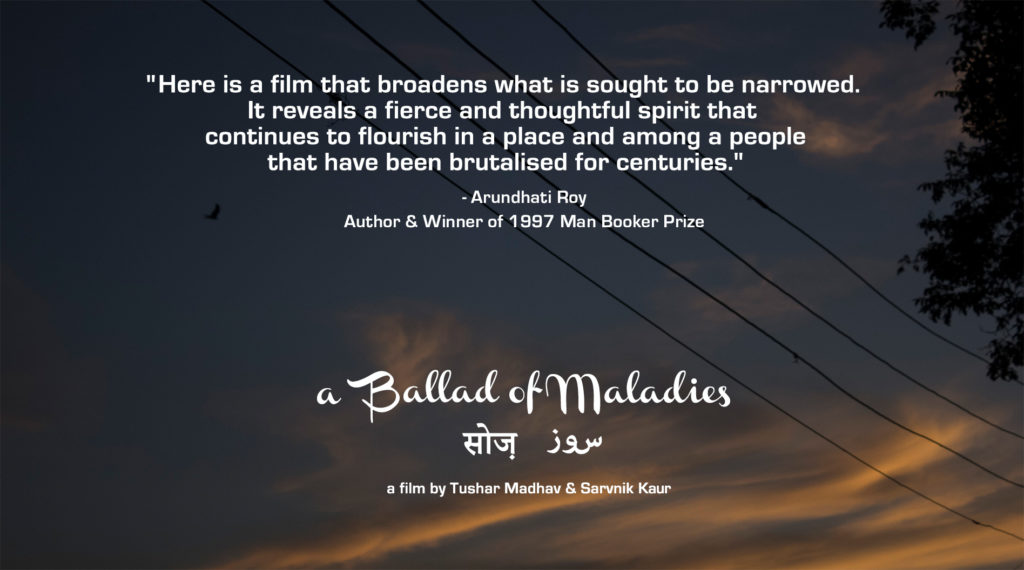
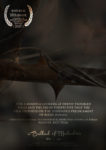
Description
The film unveils a transformed cultural fabric of Kashmir valley through a journey into the metamorphoses of its traditional practices like Sufiyana music and poetry to contemporary art forms such as Hip Hop and Rock. By evoking the collective memory of their people and unwinding threads of the region’s folk history, the featured artists and musicians in this film negotiate with questions of survival, resistance and freedom – all deeply embroiled in the complex conflict of Kashmir.
My first film Soz: A Ballad of Maladies was an exploration of Kashmir’s disenfranchised youth who struggle to express themselves amid state excess, surrounded by conflict that’s been ongoing for several decades.
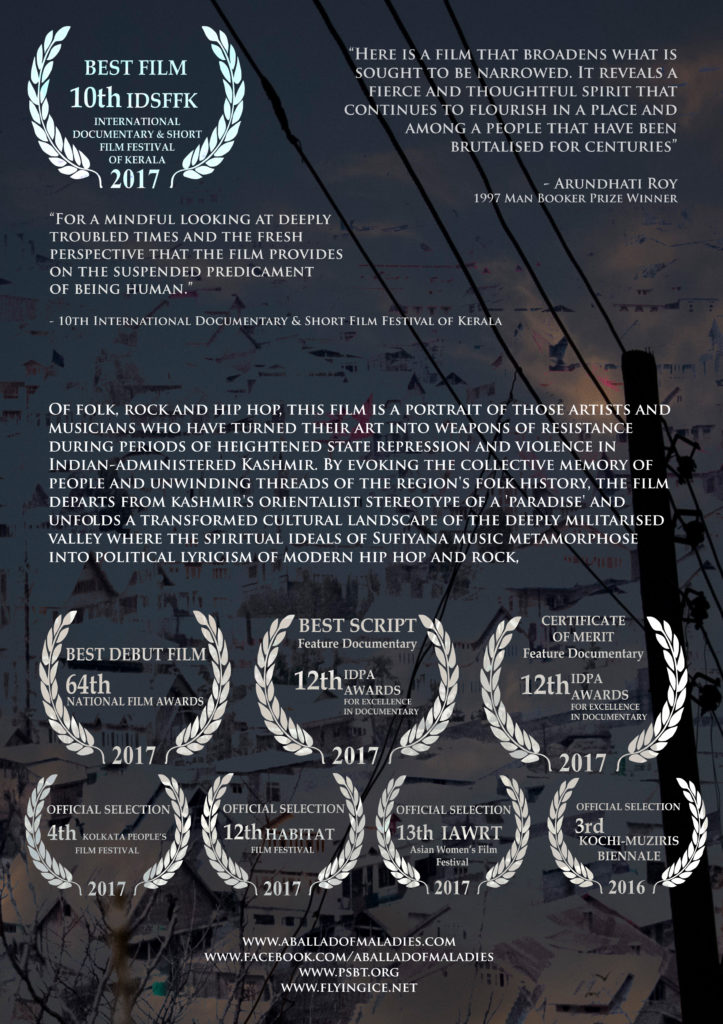
What should the audience know about this film?
I co-directed Soz with Tushar Madhav – my college batch-mate from Jamia Milia Islamia University. This film was pulled off on a shoe-string budget of $8,000. While Soz unfurls as a mosaic of stories with a central character of a poet to tell the story of highly militarized valley and her cultural practitioners like hip-hoppers, musicians, painters to evoke a collective memory of their people.
Featured Speaker
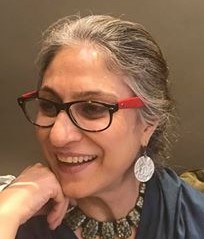
Iffat Fatima
Director of Khoon Diy Baarav (Blood Leaves its Trail) and Lanka- the Other Side of War and Peace
Iffat Fatima is an independent documentary filmmaker and researcher from Kashmir. Since 2006 she is working on the issue of enforced disappearances in Kashmir and her film Khoon Diy Baarav (Blood Leaves its Trail) 2015 explores issues of violence and memory in Kashmir. Her films include, Where Have You Hidden My New Crescent Moon, Lanka- the other side of war and peace; The Kesar Saga, In the Realm of the Visual- Dashrath Patel; Boojh Sakey to Boojh, Her video installation, Ethnography of a European city: Conversations in Salzburg, questions some of the assumptions in the east vs. west polarity/ dichotomy /disparity.
She very recently did the audio visual design for an exhibition Gold Dust Of Begum Sultans. In 2015 she co-edited a compendium Bread Beauty Revolution, Khwaja Ahmad Abbas (1914-1987). In 2004, she completed a Fellowship, Recasting Reconciliation through Culture and the Arts, at the Brandeis University, Boston, USA. In 2001, she was awarded the Asia Fellowship for her work in Sri Lanka, Inter-communal Relations and Education: The Sri Lankan Experience.

FILM OVERVIEW & DESCRIPTION:
Padauk: Myanmar Spring (2021) 56 minutes, Directed by Jeanne Marie Hallacy & Rares Michael Ghilezan
English and Burmese with English Subtitles
Padauk: Myanmar Spring takes the viewer to the streets of Myanmar during the heady days following the February 2021 military coup. Through Nant—a young, first-time protester—we meet three human rights activists whose lives have been turned upside down by the coup. As the protests continue, Nant comes to understand the truth of a brutal regime that has continued to wage war against its own people for decades. Against a foreboding backdrop, Nant’s political awakening regarding the plight of others in her ethnically diverse country gives hope for the future. Beautifully augmented by poetry and art, Padauk: Myanmar Spring shows the resilience and determination of the people of Myanmar, and the sacrifices they’ve made.
Editor: Peter Potts/AsiaWorks
Producer: Gregg Butensky
Poetry Narration: Kenneth Wong
Motion Graphics: Tak Kogatch
Directed by: Jeanne Marie Hallacy & Rares Michael Ghilezan
Mother, Daughter, Sister (2018) 27 minutes, Directed by Jeanne Hallacy
Rohingya, Jinghpaw, Burmese, and English with English subtitles
Mother, Daughter, Sister (Amae, Thamee, Ama) exposes the Burmese military’s practice of using rape as a weapon of war and gives voice to Kachin and Rohingya women activists calling for justice for these crimes. Mother, Daughter, Sister revolves around the stories of four women: Shamima, a volunteer counselor working with survivors of military rape in the Rohingya refugee camp in Bangladesh, Dil Kayas, a teenage survivor, and San Lung and Lu Ra, sister and mother of two Kachin school teachers brutally raped and killed in 2015, allegedly by the Burmese military. Powerful testimonies from survivors, witnesses, and activists explore the far-reaching impact of sexual violence and trauma upon these communities, and together, the women call for justice and an end to the army’s impunity.
Directed by: Jeanne Hallacy
Produced by: Gregg Butensky
Associate Producers: Rares Michael Ghilezan, Lucy Kang
Director of Photography: Sai Kyaw Khaing
Edited by: Mikael Enlund
Sittwe (2017) 19 minutes, Director Jeanne Hallacy
Produced by Smile Education and Development Foundation, Yangon
Rakhine, Bengali and Burmese with English subtitles.
Sittwe is about two teenagers separated by conflict and segregation in Burma’s Rakhine state – Phyu Phyu Than, a Rohingya girl and Aung San Myint, a Buddhist boy. Both youth saw their homes burned down during communal violence in 2012. Phyu Phyu Than is confined in an apartheid-style camp and has no chance to go to school or travel to her home just a few miles away. Aung San Myint’s family struggles to survive and support his high school studies to fulfill his dream to go to medical school. Interviews filmed over two years with the teenagers reveal their ideas about each other’s communities and the hope of reconciliation. Sittwe was produced as a tool for facilitated discussions about peace-building in Burma. The film was due to premiere in Yangon at the Human Rights, Human Dignity Film Festival but was banned by the government censors.
Director: Jeanne Hallacy
Cinematographer: Sai Kyaw Khaing
Editor: Elizabeth Finlayson
Featured Speakers

Jeanne Marie Hallacy
Director of Padauk: Myanmar Spring, Mother, Daugher, Sister, and Sittwe
Jeanne Marie Hallacy has lived and worked in Southeast Asia for 25 years, producing and directing documentary films about human rights and social justice issues. Her films are used as educational and advocacy tools by civil society and educational institutions.
Mother, Daughter, Sister, Sittwe, This Kind of Love and Into the Current were each released with an international speaking tour in the United States and Europe where the films were screened with engaged audience discussions. Jeanne is also the Director of InSIGHT Out! digital media project for youth in conflict-affected areas. She is the former Director of Programs at the Foreign Correspondents’ Club of Thailand.
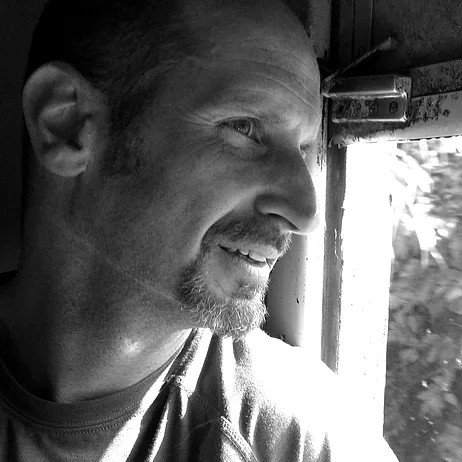
Greg Butanski
Producer of Mother, Daughter, Sister and Sittwe
Greg Butanski is an avid traveler and long time Burma activist. He established a public lending library in the Philippines and is a co-founder of the non-profit Ethical Traveler. Gregg co-founded Kirana Productions with Jeanne in 2018 and serves as Kirana’s Operations Director. In addition to being an Associate Producer and second cameraman for Mother, Daughter, Sister, Gregg worked with Jeanne on Better Homes, Better Lives (2019), Tackling TB in Yangon (2019), Sittwe (2017), This Kind of Love (2015), and Into The Current: Burma’s Political Prisoners (2012).
Nant
Narrator of Padauk: Myanmar Spring
Nant will discuss how she was swept up in the movement and how the experience has politically awakened her. In Padauk: Myanmar Spring, through Nant, a young, first-time protester, the film follows three human rights activists whose lives have been turned upside down by the coup. As the protests continue, Nant comes to understand the truth of a brutal regime that has continued to wage war against its own people for decades. Against a foreboding backdrop, Nant’s political awakening regarding the plight of others in her ethnically diverse country gives hope for the future.

Featured Speaker
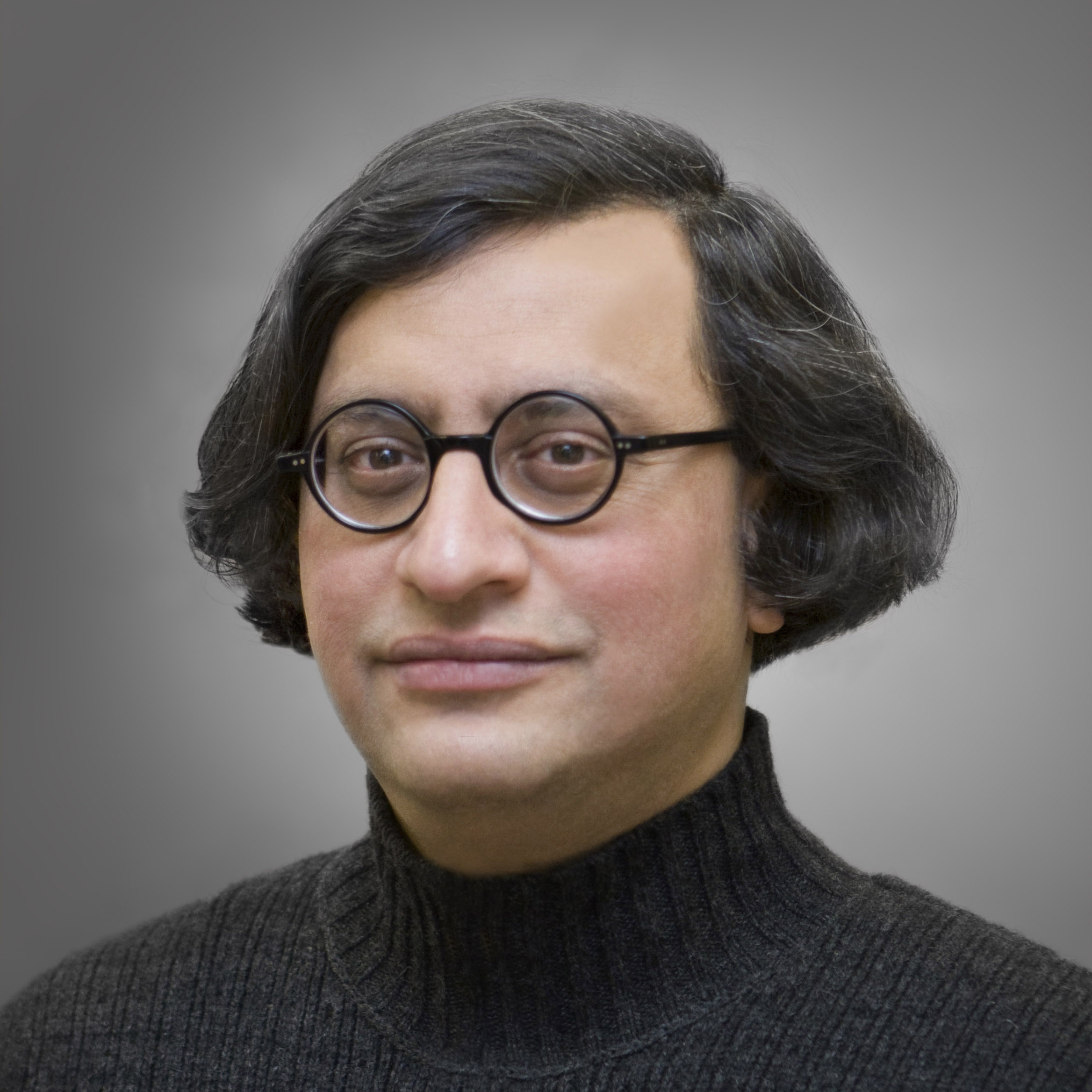
Iftikhar Dadi
Chair, Department of History of Art, Cornell University
Iftikhar Dadi is Professor and Chair of the Department of History of Art, Director of the South Asia Program, and board member of the Institute for Comparative Modernities at Cornell University. He researches modern and contemporary art from a transnational perspective, with emphasis on methodology and intellectual history. His writings have focused on modernism and contemporary practice of Asia and Africa and their diasporas. Another research interest examines the film, media, and popular cultures of South Asia, seeking to understand how emergent publics forge new avenues for civic participation.
Publications include Modernism and the Art of Muslim South Asia (2010), the edited monograph Anwar Jalal Shemza (2015), the co-edited catalog Lines of Control (2012), and the co-edited reader Unpacking Europe (2001). He is an advisor to Asia Art Archive and serves on the editorial advisory board of Bio-Scope: South Asian Screen Studies. As an artist, Iftikhar Dadi collaborates with Elizabeth Dadi. Their practice investigates questions of identity and borders, and the capacities of the informal urban realm across South Asia and the Global South. Their art draws on the tropes of archaeology and media, and critically engages with the legacies of Pop Art, Conceptual Art, and site-specificity.

FILM OVERVIEW & DESCRIPTION:
Lanka – The other side of war and peace (2002-2005) 75 minutes, Iffat Fatima
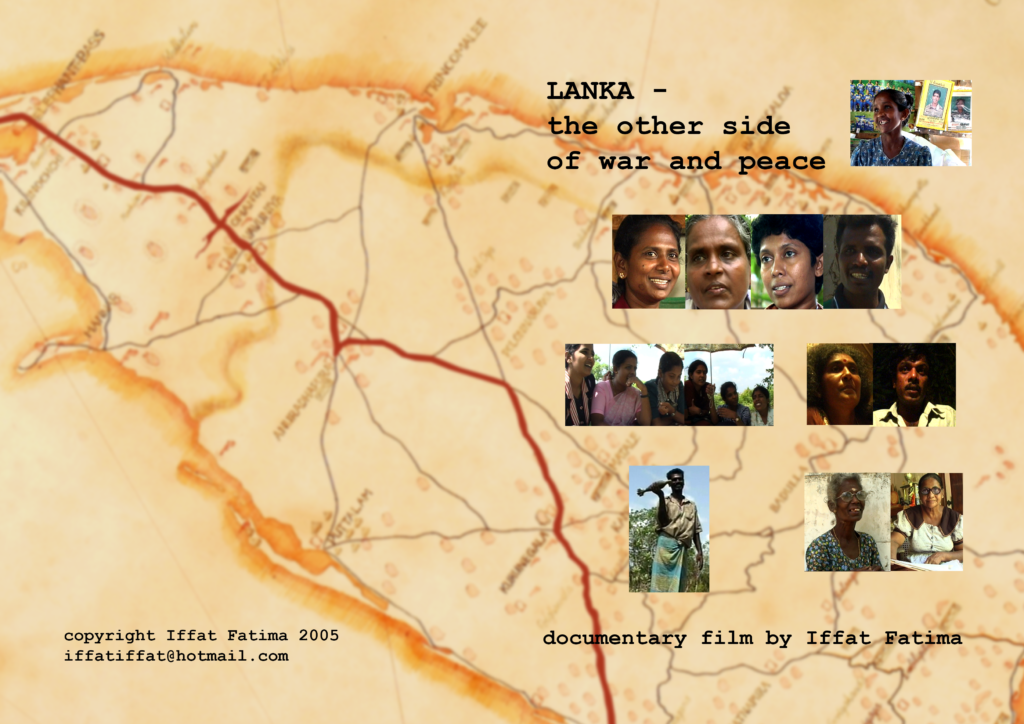
On February 22, 2002, after decades of brutal fighting, the Government of Sri Lanka led by Ranil Wikramesinghe and the Liberation Tigers of Tamil Eelam led by Vellupilai Prabhakaran signed a ceasefire agreement. Soon after, in April, 2002, the A9 highway, which links North with South Sri Lanka, was opened to civilian traffic after 12 years. It was a historic moment, ushering in a long awaited period of hope for a negotiated settlement to the ethnic conflict, which for decades seriously embittered the relations between different communities – the Sinhalese, the Tamil and the Muslims – living in Sri Lanka. For those displaced and separated by years of war the A9 highway became the ‘Road to Peace’ and a catalyst for the documentary film on which I worked from 2002 to 2005.
The film, as it shuttles between north and south, spans the history of last three decades of violence in Sri Lanka juxtaposing the multiple realities of war and peace, which simultaneously exist here. Sri Lanka’s history of violence is pervasive and protracted. The armed Janatha Vimukti Peramuna (JVP) insurrection of the 70’s and the 80’s brutally suppressed by the Government, communal riots aided and abetted by the Government, protracted civil war between the Government of Sri Lanka and the LTTE, are bloody episodes, wherein hundreds and thousands have been killed, tortured, disappeared and displaced.
The film set out to explore the possibility and the meaning of peace within the context of Sri Lanka’s brutal history of violence. In 2002, as the ceasefire agreement brokered by the Norwegians came into effect, it soon became evident that an official discourse that privileged economic rehabilitation and reconstruction over issues of democracy and human rights was being propagated to facilitate negotiations between the two warring parties. The official discourse left little scope to investigate into the causes and impact of years of multi layered violence and to find ways of healing the deep wounds in the social fabric. The plight of the thousands who were disappeared, tortured, maimed and displaced remained unacknowledged and forgotten. The main objective of the film was to provide space for people to remember and to reflect upon their past history of violence and brutality and thereby contribute towards the creation of an atmosphere for dialogue and reconciliation. The film was made through a consultative and collaborative process with lawyers, academics and activists in Sri Lanka.
In April 2003, the peace talks between the government of Sri Lanka and the LTTE broke down, and the peace process was stalled. In July 2006, after a four-year fragile ceasefire the war resumed. It formally ended on 18 May 2009 with the killing of the LTTE leader Velupillai Prabhakaran. The Sri Lankan Army gained control over the entire territory held by the LTTE in north and east. Tens of thousands of civilians are believed to have been killed in the final months of battle. The government has denied allegations by the U.N. and human rights groups of committing war crimes and abuses during the final offensive against the Tamil Tigers and ignored international demands for an independent investigation.
Most recently in 2015, I travelled to Sri Lanka. Much has changed. In 2004, Tsunami devastated large parts of the southern coastline. LTTE is vanquished and post war reconstruction reshaped much in the country. Thhe changes are most dramatic on the 100 km stretch of the A9 that runs through the Vanni. The site of many bloody battles for over 25 years the highway has been rebuilt at a massive cost. Travelling on the road from Colombo to Jaffna after all these years was surreal. The highway is completely transformed, all traces of years of strife have been erased and a pall of normalcy has been very deliberately put over it. Along with the Tamil Tigers, the tens and thousands of lives, every memorial, every cemetery, every shrine on the road has been destroyed. It was frightening. The road on both sides overlooks flat land. What had happened to all the Palmyra trees with slashed tops that had holes in them?
Nothing of the war remains, all dissolved in asphalt, and paved with pebbles and stones. Except the huge water tank scarred by bullets, a poignant reminder of the deep scars in the collective body of the Tamil survivors, struggling to put together the shredded threads of their lives, after decades of displacement, death and destruction. As new episodes of violence begin to surface large part of the past gets erased from public domain and public discourse in Sri Lanka. As Milan Kundera says “The struggle of man against power is the struggle of memory against oblivion.” The film Lanka the other side of war and peace remains a valuable account of personal narratives, images spaces and places linked to Sri Lanka’s long history of violent conflict which is being officially and deliberately obliterated from public discourse.
A Virgin Vote: In a Time of Pandelection (2020) 12 minutes, a short documentary film by Udan Fernando

English with English subtitles
Description
A 53 year old man arrives at the voting booth for the first time in his life, to vote for an election of the country that he holds dear to him. He crosses the ballot card with a fervent hope and resolve that his country deserves an overall transformation, including a new constitution, new leadership that drives the country towards progress and a fresh political culture that unites the people towards progress. Upon casting his maiden vote, he goes for a stroll to discover an area he had not hitherto seen in his own neighborhood and of himself. He wonders if the vote he just casted is by chance or choice. Perplexed by this question and lost in a labyrinth of newly discovered neighborhood and his own thoughts on democracy, motherland and patriotism, he fumbles to find his way back home. A story of one man’s self-discovery and his quest to find his political self in a climate of uncertainty amidst forces of misfortune and misery created by the recent pandemic.
What was the source of inspiration for the film?
The idea for the film was inspired by meeting a person, Sri Lankan origin, who is usually based in Singapore. He had visited Sri Lanka in early March 2021. The Covid-triggered travel restrictions did not allow him to return to Singapore. He was compelled to be stationed in Sri Lanka for many months. This was the first time he had stayed in his country of origin for the longest time since he left for Europe for studies at the age of 16 years and continued to live there.
Which social or political context was this created?
The heightening of the civil war in Sri Lanka (1983-2009) witnessed a heavy mobilization of concepts of ‘motherland’ and ‘patriotism’ by the Sri Lankan government which was perceived to be identified with the Sinhalese due to its majority composition and as the Tamil armed movements fought relentlessly for a separate state. While the physical war was fought in the Sri Lankan terrain, an equally intense war of ideology was fought at the international level, legitimizing and delegitimizing the narratives of the two warring parties. It is in the latter terrain that the Sri Lankan migrants and diaspora played an active role somewhat akin to ‘long-distance nationalism’, a concept introduced by the anthropologist Benedict Anderson. The film strives to superimpose an individual’s reflection on ‘home’ in the current discourse on patriotism in Sri Lanka.
What were the main challenges encountered?
Shooting on a strictly controlled day which was the election day in August 2020 due to Covid 19 restrictions.
Director of Photography: Sameera Weerasekara
Editor: Lahiru Kanishka
Music: Nadeeka Guruge
Colorist: Marlan Jayans
Assistant Director: Yoshitha Perera
Concept and Director: Udan Fernando
A Covid Honeymoon (2020) 21 minutes, a short feature film by Udan Fernando
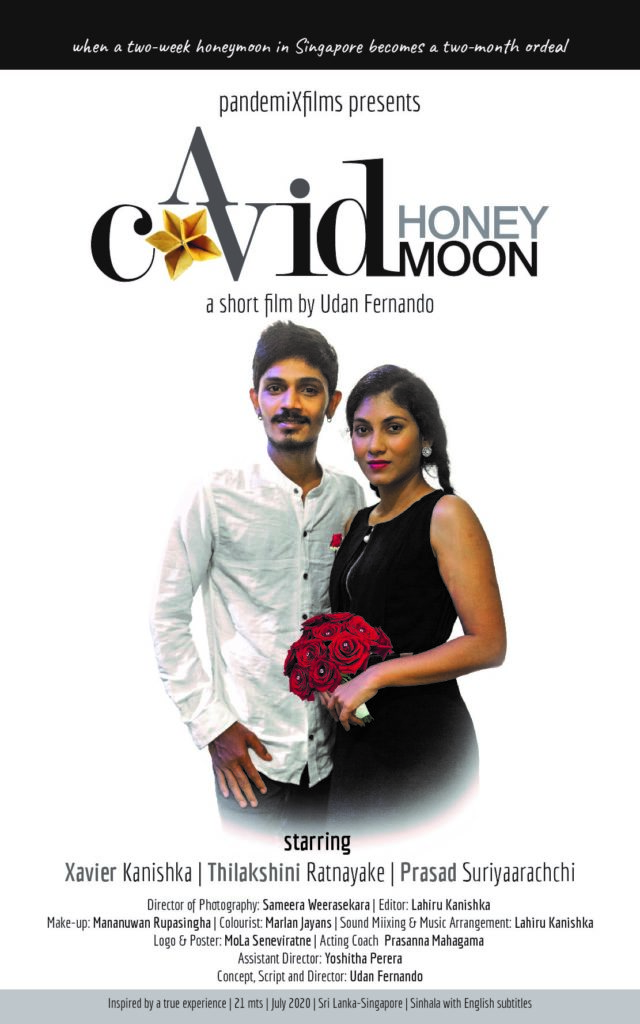
Sinhala with English subtitles
Description
With their hard-saved $1,000, a young Sri Lankan couple fly to Singapore for a two- week honeymoon, with little or no idea about Covid19. The outbreak spikes during their honeymoon and a lockdown gets imposed. The two-week honeymoon becomes a two-month ordeal with no flights to return and nowhere to stay and with only $ 30 left in hand.
What was the source of inspiration for the film?
Having stayed in Singapore for three months due to the closure of airports during the Covid 19 lock-down, the director, Udan Fernando, finally finds a seat in a special repatriation flight to Colombo. On the eve of his departure, he hears a story that hits him like a virus. It is this story that preoccupies him throughout his two-week quarantine term at a government centre run by the military, in a remote area in Eastern Sri Lanka. Amidst the constant chatter of the fellow quarantine-mates in a small dormitory, the many upheavals at the quarantine centre and the grim circumstances facing him, the director seeks refuge in a corner bed that becomes his working, thinking and dining space. It is at this corner bed that he writes his script based on the story that he had heard before his departure. A Covid Honeymoon – a film born out of a situation of overlapping crises.
Which social or political context was this created?
The pandemic situation in Sri Lanka coincided with change of governments. Exacerbated by the unprecedented influence of the pandemic, the film strives to capture the personal, social and political spheres at play.
What were the main challenges encountered?
The film was shot in the early stages of Covid 19 when there were serious restrictions even on small gatherings and the need to keep physical distance. As such, the production team was limited to a minimum and shooting schedule had to me planned meticulously. Screening was also a major challenge due to Covid 19 related restrictions. The first screening, held in Colombo in August 2021, had to be organized as three screenings over three days, because the number of seats per screening had to be reduced to maintain social distance.
Cast: Xavier Kanishka, Antoinette Thilakshini Ratnayake Chandana, Prasad Suriyaarachchi
Director of Photography: Sameera Weerasekara
Editor: Lahiru Kanishka
Colorist: Marlon Jayans
Make-up: Mananuwan Rupasinghe
Sound Engineering & Music Arrangement: Lahiru Kanishka
Assistant Director: Yoshitha Perera
Concept, Script & Director: Udan Fernando
Featured Speaker
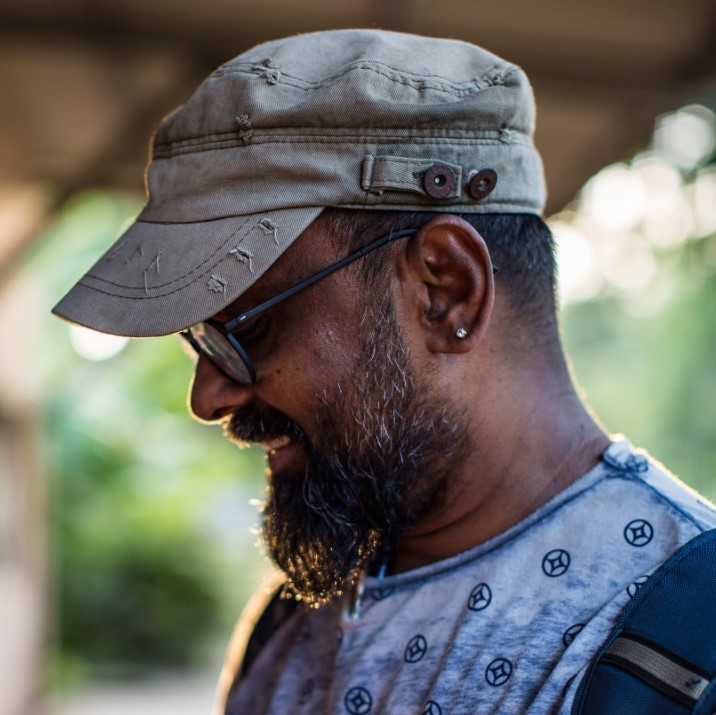
Udan Fernando
Director of A Covid Honeymoon and A Virgin Vote: In a Time of Pandelection
Udan Fernando is a researcher with 30 years of experience in Asia, Africa and Europe. Having read for his PhD at the University of Amsterdam, he worked in the Netherlands for about a decade before he resettled in his country of origin, Sri Lanka, to head a Colombo-based Think Tank. Udan received a Diploma in Cinematography from OCIC, Colombo in 1985 and followed a Short Course on Anthropological Film Making at the University of Amsterdam in 2007. Due to his preoccupation with research and other professional work, Udan had to wait until 2018 to direct a film which was Dwandha (Duel): A Tale of Two Rebels, 50 minutes, English, a documentary based on two years of research in the UK and Australia. Dwandha was screened in Colombo (several times), Jaffna, London, The Hague, New Delhi, Melbourne and Siem Reap. In 2020, Udan directed two short films, a feature and a documentary which will be screened at the AAS Film Festival. Currently, Udan is functions as Head, Colombo Charter, Asian Civil Society Research Network (hosted by the Asia Centre, University of Melbourne) and an Independent Researcher, splitting his time in Sri Lanka and Singapore.
Roundtable Chairs
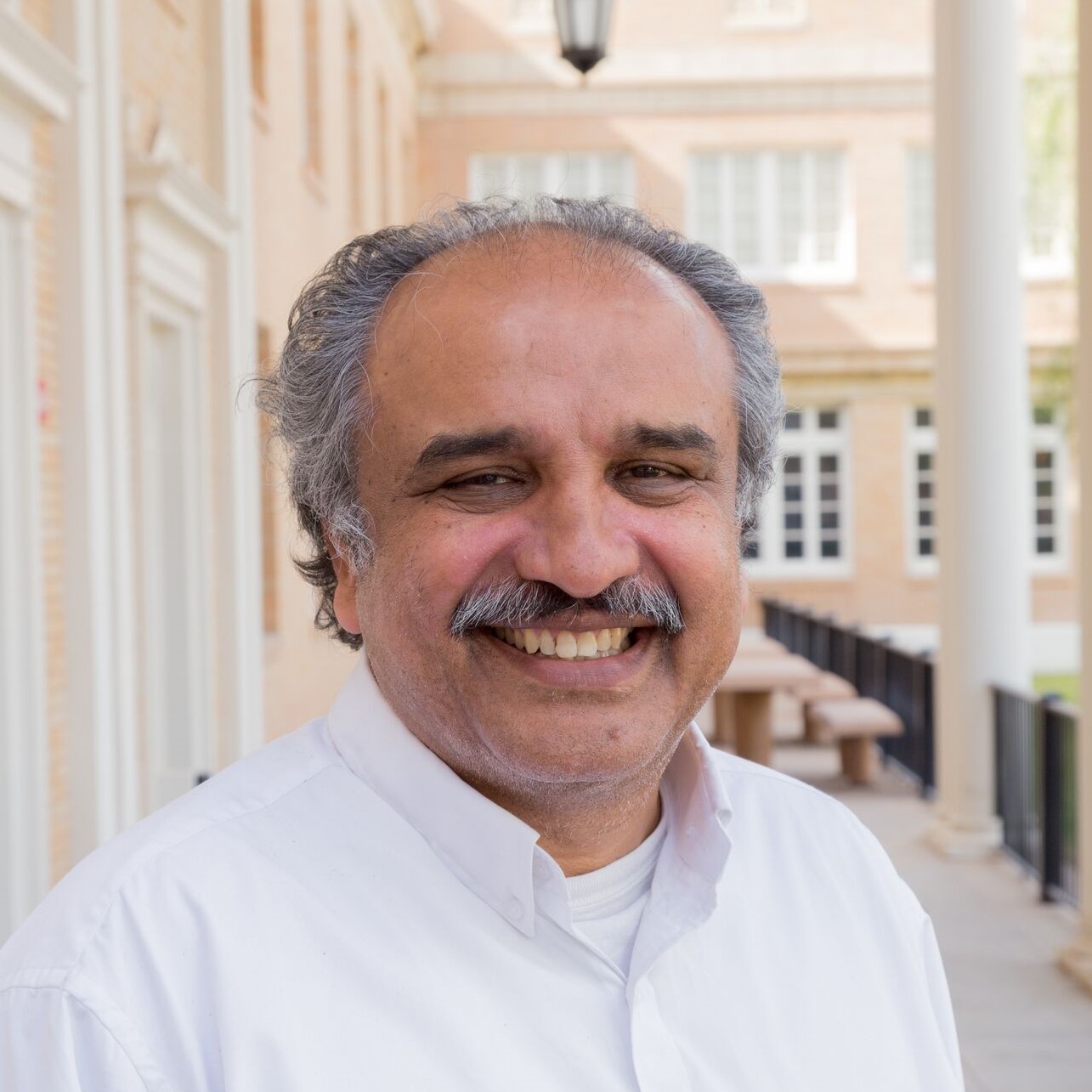
Kamran Asdar Ali
Kamran Asdar Ali is AAS Vice-President and Professor of Anthropology, Middle East Studies and Asian Studies at the University of Texas, Austin. His research interests include gender, sexuality, health, political economy, post-colonialism, labor history, and popular culture.

Dina Siddiqi
Dina Siddiqi is Professor at NYU where she researches and publishes on a range of issues grounded in the study of gender and Islam in Bangladesh, the transnational feminist politics, women’s work in the ready-made garment industry, the anthropology of human rights, gender justice, and non-state dispute resolution mechanisms.




